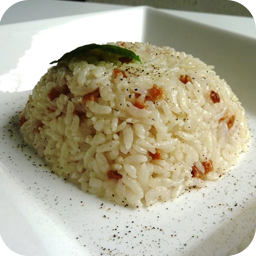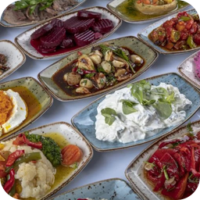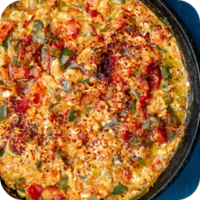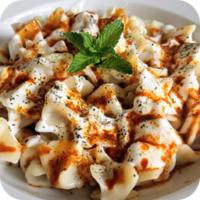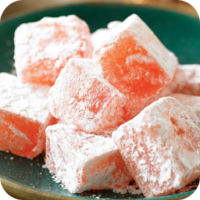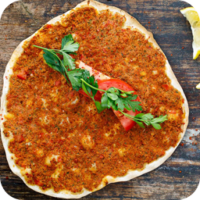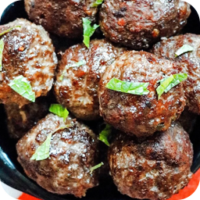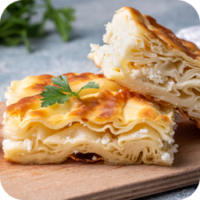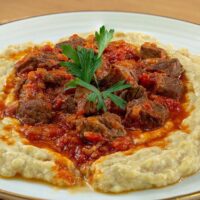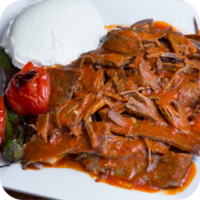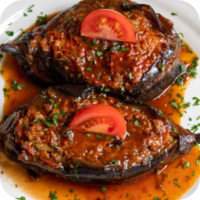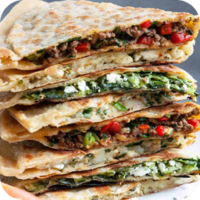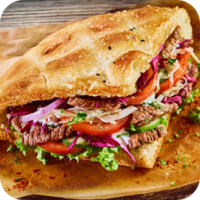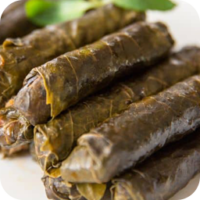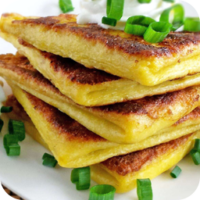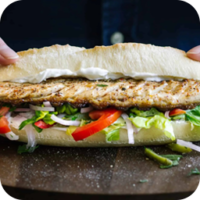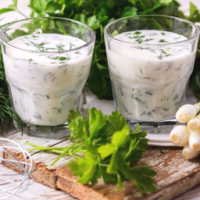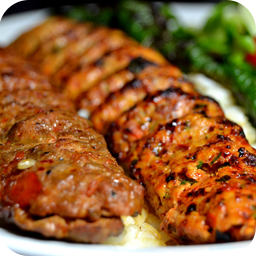Posted by theeatland
- Dec 3, 2024
- 107
- 0
Pilav is a traditional Turkish dish made from rice, typically cooked with butter, olive oil, or meat broth, and often flavored with a variety of spices, herbs, and vegetables. It is a staple in Turkish cuisine and is often served as a side dish with meats, stews, or vegetables, or even as a main dish.
Key Features of Pilav:
- Ingredients:
- Rice: The main ingredient is typically long-grain rice such as baldo rice (a type of Turkish rice), known for its ability to absorb flavors while remaining fluffy.
- Fat: Pilav is often cooked in butter or olive oil for added richness, but it can also be made with meat broth (beef, lamb, or chicken) for extra depth of flavor.
- Spices and Aromatics: Pilav is flavored with various seasonings, such as salt, pepper, bay leaves, cinnamon, and nutmeg. Some recipes also include onions or garlic for extra flavor.
- Preparation:
- The rice is first rinsed to remove excess starch, which helps to keep it fluffy. Then, it is sautéed briefly in fat to enhance its flavor before being simmered in water or broth until tender.
- The cooking liquid can be seasoned with herbs and spices, and the pilav is usually covered and cooked on low heat to allow the rice to steam and absorb the flavors.
- Types of Pilav:
- Plain Pilav (Beyaz Pilav): The most basic version of pilav, made with just rice, butter, and broth.
- Vegetable Pilav: A variation that includes peas, carrots, or green beans mixed with the rice, giving it more color and flavor.
- Meat Pilav: Sometimes pilav is made with chicken, lamb, or beef, where the meat is cooked with the rice to infuse it with rich flavors.
- Tomato Pilav: Pilav can be flavored with tomato paste or fresh tomatoes for a savory, slightly tangy flavor.
- Pilav with Nuts: Some versions include pine nuts or almonds, which are toasted and mixed into the rice for added texture and richness.
- Serving:
- Pilav is typically served as a side dish, often accompanying meat-based dishes like kebabs, stews, or grilled meats. It can also be a standalone dish, especially when made with added vegetables or meat.
- It is commonly served at large family meals, gatherings, and festive occasions.
- Cultural Significance:
- Pilav is a staple in Turkish home cooking and is often prepared for special occasions, gatherings, and family meals. It holds cultural importance as a comforting, versatile dish that can be adapted in many ways.
- It is a traditional accompaniment to many Turkish dishes, such as kebabs or lamb stew.
Taste Profile:
Pilav has a rich, comforting flavor, with the rice being fluffy and tender, absorbing the savory broth or spices it is cooked with. The addition of butter, olive oil, or meat broth gives the rice a rich, slightly creamy texture, making it a satisfying side dish. The flavor can vary depending on the ingredients, with the rice sometimes taking on a mild, herb-infused taste or a more robust, meaty flavor.
Summary:
Pilav is a Turkish rice dish that is rich and flavorful, typically made by cooking rice in butter or oil and seasoning it with spices, herbs, and sometimes meat or vegetables. It is a versatile dish that can accompany a wide range of main courses or be enjoyed on its own, making it a beloved and staple food in Turkish cuisine.
Tags:
- buttery rice
- comfort food
- delicious rice dish
- healthy side dish
- meat pilav
- Mediterranean food
- pilav
- pilav with meat
- pilav with vegetables
- rice dish
- rice with broth
- savory rice
- side dish
- traditional Turkish food
- Turkish cooking
- Turkish cuisine
- Turkish home cooking
- Turkish meals
- Turkish recipes
- Turkish rice
- vegetable pilav
Recommended Posts
- Dec 3, 2024
- 101 read
Pide is a traditional Turkish dish often referred to as "Turkish pizza"...
Read Article- Dec 3, 2024
- 96 read
Meze refers to a variety of small, flavorful dishes served as appetizers...
Read Article- Dec 3, 2024
- 118 read
Menemen is a classic Turkish dish made with scrambled eggs, tomatoes, green...
Read Article- Dec 3, 2024
- 87 read
Manti is a traditional Turkish dish that consists of small, bite-sized dumplings...
Read Article- Dec 3, 2024
- 96 read
Lokum, commonly known as Turkish delight, is a traditional Turkish confection made...
Read Article- Dec 3, 2024
- 139 read
Lahmacun is a popular Turkish dish often referred to as "Turkish pizza"...
Read Article- Dec 3, 2024
- 92 read
Köfte is a popular and versatile dish in Turkish cuisine, consisting of...
Read Article- Dec 3, 2024
- 88 read
Knafeh (or Kunefe) is a popular and indulgent dessert in Turkish and...
Read Article- Dec 3, 2024
- 155 read
Börek is a beloved and versatile dish in Turkish cuisine, made with...
Read Article- Dec 3, 2024
- 90 read
Hünkârbeğendi is a traditional Turkish dish known for its rich flavors and...
Read Article- Dec 3, 2024
- 104 read
İskender Kebab is a famous and delicious Turkish dish that originates from...
Read Article- Dec 3, 2024
- 80 read
İmam Bayıldı is a classic Turkish dish made from eggplants (aubergines) stuffed...
Read Article- Dec 3, 2024
- 105 read
Gözleme is a traditional Turkish pastry made of thin, unleavened dough that...
Read Article- Dec 3, 2024
- 89 read
Dolma is a traditional Turkish dish with vegetables or vine leaves stuffed...
Read Article- Dec 3, 2024
- 81 read
Chebureki (called Çibörek in Turkish) is a delicious deep-fried pastry that is...
Read Article- Dec 3, 2024
- 132 read
Balık Ekmek, which translates to "fish sandwich," is a beloved and iconic...
Read Article- Dec 3, 2024
- 102 read
Baklava is a rich and decadent dessert originating from the Ottoman Empire,...
Read Article- Dec 3, 2024
- 108 read
Turkish Baked Potato, known locally as Kumpir, is a popular and indulgent...
Read Article- Dec 3, 2024
- 212 read
Ayran is a traditional Turkish yogurt-based drink that is simple yet beloved...
Read Article- Dec 3, 2024
- 93 read
Adana Kebab is a popular and iconic dish in Turkish cuisine, originating...
Read Article
